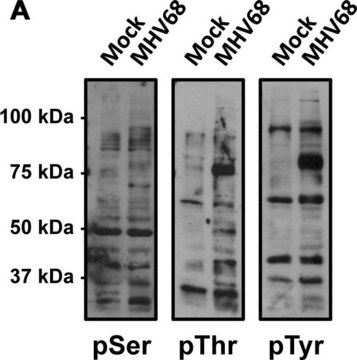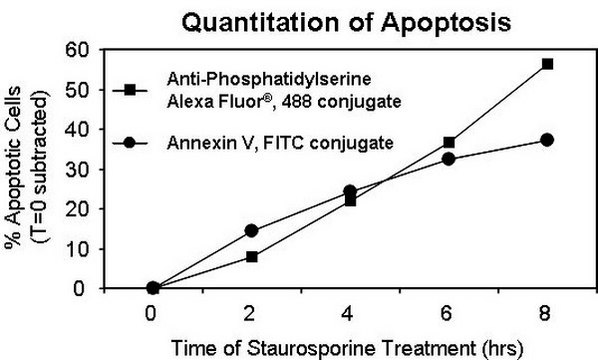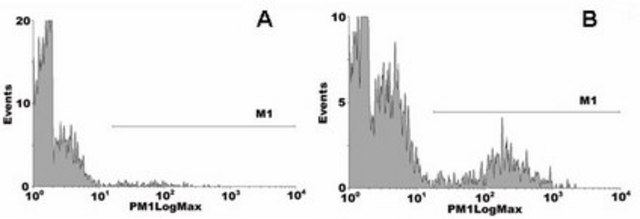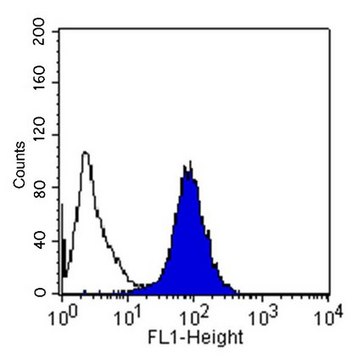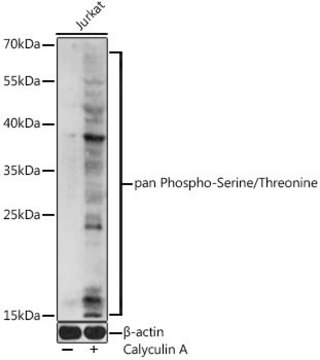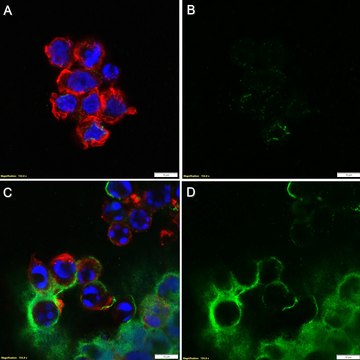一般描述
We are committed to bringing you greener alternative products, which adhere to one or more of The 12 Principles of Green Chemistry. This antibody is Preservative-free, produced without the harm or sacrifice of animals and exceptionally stable to allow for ambient shipping and storage if needed and thus aligns with "Waste Prevention", "Designing Safer Chemicals" and "Design for Energy Efficiency".
Click here for more information.
ZooMAb® antibodies represent an entirely new generation of recombinant monoclonal antibodies. Each ZooMAb® antibody is manufactured using our proprietary recombinant expression system, purified to homogeneity, and precisely dispensed to produce robust and highly reproducible lot-to-lot consistency. Only top-performing clones are released for use by researchers. Each antibody is validated for high specificity and affinity across multiple applications, including its most commonly used application. ZooMAb® antibodies are reliably available and ready to ship when you need them.
特异性
Clone 3D2 is a ZooMAb® Rabbit recombinant monoclonal antibody that specifically detects C1QBP. It targets an epitope within 16 amino acids from the internal region.
免疫原
KLH-conjugated linear peptide corresponding to 16 amino acids from the internal region of human C1QBP.
应用
Quality Control Testing
Evaluated by Western Blotting in RAW264.7 cell lysate.
Western Blotting Analysis: A 1:10,000 dilution of this antibody detected C1QBP in RAW264.7 cell lysate.
Tested Applications
Western Blotting Analysis: A 1:10,000 dilution from a representative lot detected C1QBP in lysates from HT-1080 cells and Human testis tissue..
Immunohistochemistry (Paraffin) Analysis: A 1:1,000 dilution from a representative lot detected C1QBP in Human testis tissue sections.
Flow Cytometry Analysis: 0.1 µg from a representative lot detected C1QBP in one million HT-1080 cells.
Immunocytochemistry Analysis: A 1:100 dilution from a representative lot detected C1QBP in HT1080 cells.
Note: Actual optimal working dilutions must be determined by end user as specimens, and experimental conditions may vary with the end user.
目标描述
Complement component 1 Q subcomponent-binding protein, mitochondrial (UniProt: Q07021; also known as ASF/SF2-associated protein p32, Glycoprotein gC1qBP, C1qBP, Hyaluronan-binding protein 1, Mitochondrial matrix protein p32, gC1q-R protein, p33, SF2AP32) is encoded by the C1QBP (also known as GC1QBP, HABP1, SF2P32) gene (Gene ID: 708) in human. C1QBP is a highly conserved, multifunctional and multicompartmental protein involved in inflammation and infection processes, ribosome biogenesis, mitochondrial protein synthesis, regulation of apoptosis, and transcriptional regulation and pre-mRNA splicing. Its high expression is observed cardiac and skeletal muscle. It is synthesized with a transit peptide (aa 1-73), which is proteolytically processed after it reaches the mitochondrial matrix. It is predominantly localized to mitochondria, but is also detected in cytoplasm, membrane, and nucleus. It primarily localized in mitochondrial matrix and is associated with mitochondrial oxidative phosphorylation. It also supports translation of the mitochondrially encoded respiratory chain protein complexes I, III, IV and V. It is also secreted by activated lymphocytes. At the cell surface is thought to act as an endothelial receptor for plasma proteins of the complement and kallikrein-kinin cascades. It is also reported to be a putative receptor for C1q; specifically binds to the globular ′heads′ of C1q thus inhibiting C1. It can also bind other plasma proteins, such as coagulation factor XII leading to its autoactivation. The secreted form may enhance both extrinsic and intrinsic coagulation pathways. Mutations in C1QBP gene has been linked to combined oxidative phosphorylation deficiency 33 (COXPD33), an autosomal recessive disorder leading to multiple mitochondrial respiratory chain defects and impaired mitochondrial energy metabolism. This ZooMAb® recombinant monoclonal antibody, generated by our propriety technology, offers significantly enhanced specificity, affinity, reproducibility, and stability over conventional monoclonals. (Ref.: Wang, J., et al. (2022). Front. Cardiovasc. Med, 9; 843853; René G Feichtinger, RG., et al. (2017). Am. J. Hum. Genet. 101(4); 525-538).
外形
Purified recombinant rabbit monoclonal antibody IgG, lyophilized in PBS with 5% Trehalose, normal appearance a coarse or translucent resin. The PBS/trehalose components in the ZooMAb formulation can have the appearance of a semi-solid (bead like gel) after lyophilization. This is a normal phenomenon. Please follow the recommended reconstitution procedure in the data sheet to dissolve the semi-solid, bead-like, gel-appearing material. The resulting antibody solution is completely stable and functional as proven by full functional testing. Contains no biocide or preservatives, such as azide, or any animal by-products. Larger pack sizes provided as multiples of 25 µL.
储存及稳定性
Recommend storage of lyophilized product at 2-8°C; Before reconstitution, micro-centrifuge vials briefly to spin down material to bottom of the vial; Reconstitute each vial by adding 25 µL of filtered lab grade water or PBS; Reconstituted antibodies can be stored at 2-8°C, or -20°C for long term storage. Avoid repeated freeze-thaws.
法律信息
ZooMAb is a registered trademark of Merck KGaA, Darmstadt, Germany
免责声明
Unless otherwise stated in our catalog or other company documentation accompanying the product(s), our products are intended for research use only and are not to be used for any other purpose, which includes but is not limited to, unauthorized commercial uses, in vitro diagnostic uses, ex vivo or in vivo therapeutic uses or any type of consumption or application to humans or animals.

